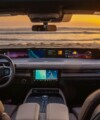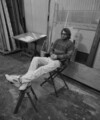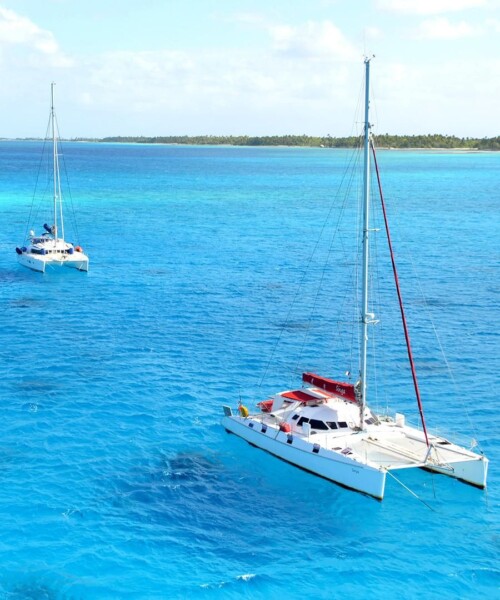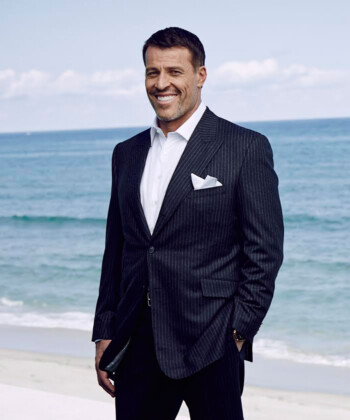Scott Leonard had the picture-perfect life: a beautiful wife, three healthy children and a successful wealth management business based in Los Angeles. But in 2010 he decided to sell his home, pack up his family and attempt to set sail around the world for three years while still running his company. Here, Leonard shares his story with DuJour.
I grew up sailing. As a little kid I had this dream that one day I’d sail around the world.
I was five years into running my business, a wealth management firm, when our first son Griffin was born in 2000. My clients—all successful businesspeople— would congratulate me, but then say things like, “I worked so hard while my kids were young that I almost didn’t get to see them grow up. I would give all this wealth back to have the opportunity to spend time with them.” That really resonated with me.
My wife and I had two more sons after Griffin, and I started thinking about what a great thing it would be to sail around the world with my family while the kids were still young, before they started high school. My father passed away of a heart attack at the age of 49, and I guess I always thought that heart disease was hereditary, that I might not live to an old age, and now was my chance to really spend time with my family.

So we started planning. We knew we wanted to spend at least three years sailing around the world, and that we wanted to be back in time for Griffin, our oldest, to start high school. We counted backwards from there and put a date on the calendar.
That was about 10 years before we actually set sail. I spent years preparing my business for this because financially, I wasn’t ready to retire. I knew I needed to find a way to continue to run my business while taking this trip. I had to hire the right people and make the clients feel comfortable looking to the company for answers, as opposed to looking to me for the answers.
This was at end of 2009. With the financial crisis we were going through, it was not, as you can imagine, the best time to be in a financial services firm, sitting down with clients and saying, “By the way, I’m going to take three years to sail around the world!” But for the most part, everybody was supportive. They understood the motivation. Of course, there was some apprehension. A couple clients told me they’d have to leave for another advisor. I certainly wouldn’t begrudge anybody for that decision. I told them, “Why don’t you stick with us and see if anything changes. If so, I will refund the fees for the time that I’ve been gone and we’ll help you make a smooth transition.” And nobody left.

We did tons of research and chartered different boats to decide which would be the right fit. We decided on a Lagoon 500—a 50-foot catamaran. It has four bedrooms, each with a queen-size bed and a bathroom. We have a dishwasher, a washer/dryer, a fridge, freezer, a flat screen TV. It truly is a big floating house.
We sold our house in Hermosa Beach, California and left in July 2010 out of Ft. Lauderdale, Florida. There’s a pretty common route that people use to sail around the world that was already plotted out for us. From Ft. Lauderdale, the first stop was the Bahamas. We worked our way around the Caribbean chain through the Dominican Republic to Puerto Rico. Then South America—Venezuela, Curacao, Colombia, the Panama Canal, the Galapagos Islands, French Polynesia, the Cook Islands. Then Tonga, New Zealand and eventually to Fiji, where we are now.

It’s just the five of us on the boat. My kids are 7, 11 and 13 years old, and they’re homeschooling. Every 20 lessons they have exams, so we try not to move the boat while they’re testing. My wife is the teacher, the principle and the superintendent. We try to find the other boats with kids who are on the same route as us. There are very few, but when you find one you tend to stick together so the kids have more people to play with.
We have big battery banks and diesel generators and solar panels, so electricity is certainly not an issue. We have satellite communication that works really well and data connection, so we can use the phone and email whenever we need to. I still go back to the office about every three months and spend 10 days there doing marathon meetings. There’s not many places where I feel comfortable leaving the boat with my wife and three kids when I get back to the office—and also where I can get easy access to fly back to the U.S.—so we plan it out at the major ports of call. Running the business isn’t as much of a challenge as you’d think.
The biggest overall challenge, surprisingly, is that the saltwater makes for a really tough environment to live in, plus the amount of work and maintenance it takes to keep a boat running. We spent a year making sure our skills were up to snuff because we’re truly our own utility. We make our own electricity and all of our own water. I have a lot of mechanical skills now that I’ll probably never use again once this trip is over, but I can fix a water-maker, generators and toilets.
As for when we get back? I’m not sure what the plan is. We sold our home because we new this would be a life-changing event for us. I don’t see us going back to California. We’ve talked about going to Hawaii, but we’ve definitely spent a lot of time on the beach, so we might try living in the mountains. I’m really excited to get back and grow and the business.
I have no regrets at all. It’s been a phenomenal time for all of us. The kids are loving it. For anyone considering this sort of thing…I’d tell them, you gotta just do it. Get out there and get going. Of course, you can’t show up without planning, but if you spend so much time overanalyzing the decision, you’ll never get out and just do it. This is an on-the-job training type of experience. You need to have your dreams, but ultimately, you gotta go live them.
Scott Leonard’s book, The Liberated CEO (Wiley & Sons), is available now.










































